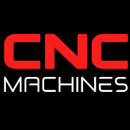CNC Lathe Workholding: Hydraulic Chucks vs. Air Chucks and Beyond

CNC Lathe Workholding: Hydraulic Chucks vs. Air Chucks and Beyond
Introduction to Workholding in CNC Lathes
Defining Workholding
Workholding refers to the various devices and techniques used to securely hold a workpiece in place during machining operations. In CNC lathe operations, proper workholding is vital to achieving accurate and repeatable results.
Importance of Effective Workholding
Effective workholding improves accuracy, efficiency, and part quality in several ways:
- Accuracy: Securely held workpieces prevent movement during machining, reducing the risk of dimensional errors.
- Efficiency: Quick setup and reliable holding mechanisms streamline production processes.
- Part Quality: Consistent workholding enhances surface finishes and tolerances, contributing to overall quality.
Hydraulic Chucks
Description
Hydraulic chucks utilize a hydraulic mechanism to clamp and release workpieces. They typically feature a clamping sleeve that expands or contracts based on hydraulic pressure, providing a strong grip on the workpiece.
Advantages
- High Clamping Force: Hydraulic chucks provide significant clamping force, ensuring rigid workholding, even during heavy cuts.
- Accommodation of Irregular Shapes: The flexible nature of hydraulic clamping allows for secure holding of irregularly shaped workpieces.
- Improved Precision and Repeatability: Hydraulic chucks maintain consistent clamping pressure, leading to enhanced precision and repeatability in machining operations.
Applications
Hydraulic chucks are preferred in scenarios that require high precision and stability, such as:
- Heavy-duty machining of large components.
- Applications involving irregularly shaped parts.
- Precision machining of critical aerospace and automotive components.
Air Chucks
Description
Air chucks operate using pneumatic mechanisms to clamp workpieces. Compressed air is used to expand or contract the chuck, allowing for quick setup and release.
Advantages
- Quick Setup and Release Times: Air chucks allow for rapid changes between workpieces, enhancing overall efficiency in production environments.
- Lightweight and Versatile Design: The lightweight design of air chucks makes them easy to handle and suitable for various machining applications.
- High-Speed Machining: Air chucks excel in high-speed machining applications, where quick changes and minimal downtime are crucial.
Applications
Air chucks are commonly used in industries and tasks such as:
- High-speed production environments.
- Applications requiring frequent workpiece changes.
- Light machining operations where quick turnaround is essential.
Comparative Analysis: Hydraulic Chuck vs. Air Chuck
Performance
- Precision: Hydraulic chucks generally offer better precision and stability due to their high clamping force.
- Durability: Hydraulic chucks are often more durable in heavy-duty applications, while air chucks excel in quick-change scenarios.
Cost
- Price Points: Hydraulic chucks tend to have a higher upfront cost due to their complexity, while air chucks are typically more affordable.
- Maintenance Considerations: Hydraulic systems may require more maintenance to prevent leaks, while air chucks need regular checks for pneumatic issues.
Ease of Use
- User-Friendly Operation: Air chucks provide faster setup and release, making them more user-friendly in high-volume environments. Hydraulic chucks may require more setup time but offer superior clamping strength.
Best Use Cases
- Hydraulic Chucks: Ideal for heavy-duty machining of complex components that require high precision.
- Air Chucks: Best suited for high-speed machining and scenarios where quick workpiece changes are necessary.
Other Workholding Methods for CNC Lathes
Manual Chucks
Three-Jaw and Four-Jaw Chucks: Traditional manual chucks are reliable options for holding round or square workpieces. Three-jaw chucks provide centering capabilities, while four-jaw chucks allow for greater versatility in clamping irregular shapes.
Collet Chucks
Collet chucks offer versatility and precision, particularly for smaller workpieces. They provide a secure grip while minimizing runout, making them ideal for intricate machining tasks.
Vacuum Fixtures
Vacuum workholding is particularly useful for thin-walled components and non-metal materials. It provides a strong hold without mechanical clamping, allowing for delicate machining operations.
Fixture Plates
Custom fixtures and plates can be designed to secure complex geometries, enhancing the versatility of CNC lathes and improving machining efficiency.
Magnetic Workholding
Magnetic chucks are effective for holding ferrous materials securely. They offer quick setups and are ideal for operations requiring fast changeovers.
Conclusion
In CNC lathe operations, choosing the right workholding method is critical to achieving precision, efficiency, and part quality. Hydraulic chucks and air chucks each offer unique advantages, making them suitable for different applications. Understanding the characteristics of each type, along with other workholding solutions, empowers manufacturers and machinists to make informed decisions tailored to their specific needs.
As machining technology continues to evolve, the importance of effective workholding will only grow. By investing in the appropriate workholding systems, companies can optimize their CNC lathe operations, leading to improved productivity and enhanced product quality.


